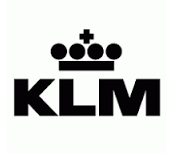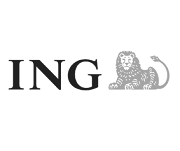How a pleasant self-image and empty tolerance stand in the way of more Diversity in the Netherlands
By Wouter Smit and Esther Mollema
Mathijs van Nieuwkerk: “What are those prejudices that people have about you?
Clarence Seedorf: Shouldn’t you ask them that? Why didn’t you? Why do I have to answer that?
Van Nieuwkerk: “And what about the 1996 photo in the UK? All black players sat at the same table. That makes us believe there was some kind of group, the black boys against the white boys?”
Seedorf: “We weren’t seen as Dutch, you tell me?”
Van Nieuwkerk: “Now you are too sensitive.”
Seedorf: “No, I am not sensitive. I explain as it should be. Nobody talked about those white tables. That is the problem. The question that the Netherlands should be asking is why do we look at color so much?”
During the College Tour-uitzending in juni 2019 interviews presenter Mathijs van Nieuwskerk, football player Clarence Seedorf. It’s a broadcast not only about great triumphs and successes, but also about setbacks. Such as the non-selection of Seedorf for the Dutch national team. Something that, according to the footballer, did not happen to him, but to the whole of the Netherlands. Seedorf carefully tries to touch on the intolerance and prevailing prejudices (about (black) football players) in the Netherlands. Esther Mollema mentions this bravely in her message LinkedIn. The post receives a lot of responses, especially from Dutch people who are not white, male, straight, secular, highly educated and Randstad and belong to the middle class. They recognize themselves in Seedorf’s uneasiness trying to pierce the “perfect picture” of tolerance and equality.
The dialogue to understand each other properly still seems difficult in the Netherlands in 2019. There is a lot of talk about but not with each other.
Another example.
Former NRC editor-in-chief Peter Vandermeersch exchanged his Belgian nationality for Dutch this year. After living and working in the Netherlands for ten years, he is critical of the Netherlands: ,, I thought I ended up in the open, tolerant and straightforward Netherlands that I thought I knew from the media I had followed for four decades and from the many visits that I had brought to land. It turned out to be different. ” Vandermeersch writes that the Dutch seem unable to exchange ideas in a good way. That the Netherlands is not the Netherlands of the positive clichés it gives itself. In other words, the self-image that the Dutch have and propagate outwardly of themselves and the Netherlands does not correspond with the actual attitude and behavior of the Dutch, say Vandermeersch and Seedorf. There is a discrepancy between the image of tolerance, (gender) equality, diversity and reality. But where does this difference come from? And what can organizations do about this.
Preference
The Dutch rate gender equality in the Netherlands particularly high, according to research by Miller et al (Women’s Representation in Science Predicts National Gender-Science Stereotypes, 2014). And that while the same study showed that compared to the other 65 countries studied, the Netherlands implicitly and explicitly scored very high on stereotypical preferences for men in certain social roles.
Dutch managers also appear to have a clear preference. Research by Direction, the leadership agency with diversity and inclusion as expertise, among nearly 11,000 managers, shows 81 percent of respondents have unconscious bias for male leaders. More than 50% even have a strong preference for male leadership.
This “bias” towards male leaders is a major reason why it is very difficult for women to achieve top positions. The Netherlands has four times as many male scientists than female scientists and only one in six top executives of the 5,000 largest Dutch companies is a woman.
Empty tolerance
According to Wijnand Mijnhardt, professor of cultural history at the University of Utrecht, the current form of tolerance in the Netherlands has to do with a number of historical factors. In the 17th century, many immigrants came to the Dutch trading cities to find work. At the time, they were absorbed into Dutch society without many problems for two reasons. Firstly, there was simply a great demand for cheap labor and, especially in Holland, many immigrants were needed to keep the economy going. Secondly, in the 17th century, the Netherlands was a densely populated country, where layers of population lived close together, with the result that the poorer immigrants in cities such as Amsterdam and Leiden came to live next to the rich patricians in the alleys between the canal houses and mansions.
This to the great surprise and dismay of foreign scholars and merchants who visited the Netherlands at the time. Numerous writings have been preserved in which it was mentioned that a stately merchant, even then, was simply booed in Amsterdam when he bumped into a poor day laborer. In other major European cities, the street scene was much more homogeneous at the time – each group lived in its own neighborhood. Mijnhardt calls it a “special kind of tolerance”, built on social pressure, a high population density, combined with freedom of religion and the freedom of the press. “However, it was not principled tolerance, but rather a kind of necessary form of self-preservation,” said Mijnhardt.
This self-preservation, or sobriety as a typical Dutch form of tolerance, can later be seen during the Pillarization, when each pillar lives completely separate from each other; the Catholics had their own butcher, the Protestants their own milkman and the Socialists their own football club. But they needed each other and they tolerated each other in the least far-reaching sense of the word. Just like in the Golden Age, people tolerated each other’s way of life, origin and culture for practical reasons, but in reality they did not have to know anything about each other.
Marli Huijer, a former thinker of the Netherlands and professor of philosophy at Erasmus University, calls this attitude “empty tolerance”; people tolerate each other, but there is no extreme form of respect for each other. Citizens who are part of the same society but who in fact live completely apart from each other. According to Huijer, this can still be seen in 2019 in metropolises in particular. “There is a diversity of lifestyles, but people are in their own bubble, they have little to do with each other. This is also a form of empty tolerance because you are completely indifferent to others. ”
Nevertheless, according to Huijer, the Dutch have a certain national character and a need for cooperation. And that has been the case for a long time, just think of the water boards that were established to resist the threat of water. “In the Netherlands a lot of people live on a tiny surface. With the more people you live on an area, the more in demand strategies for making this happen peacefully. Everything is unimaginably well organized. “” Huijer points to the unwritten rules in, for example, a busy café with not too loud music and people who talk in a hushed tone. “This social pressure pushes the Dutch to always keep negotiating, to change polder. It makes the collective culture feel like “we have to work it out together.”
One of us
How cooperation in the Netherlands takes shape and who exactly gets a place at the table is more complicated. According to Ruben Gowricharn, professor of diaspora studies at the VU University Amsterdam, the Netherlands, like other societies, still has many tribal features. “We are a” big tribe of the Dutch “and someone with a tan has to” get married “before he becomes one of us. In the Netherlands everyone has to integrate. ” As group animals, the Dutch have, according to Gowricharn, a kind of natural aversion to others with whom they cannot identify.
Language proves essential to ‘belong’ in the Netherlands, as revealed by research by PewResearchCentre in fourteen countries into the factors that matter for national identity (What it truly takes to be ‘one of us’, uit 2017) In general, the Dutch do not find it particularly important where someone was born or what kind of philosophy someone adheres to. But compared to other countries, the Dutch are most concerned about the importance of the language as part of the Dutch identity. Of all respondents in the Netherlands, 84 percent indicate that a good command of Dutch is very important for Dutch citizenship. Nowhere else is that strong preference so strong. In Hungary and the United Kingdom, 81 percent of respondents say that language is very important to citizenship, but in Canada or Italy, for example, it is “only” 59 percent of respondents.
This means that it is a lot more difficult for people with a language deficiency to climb the social ladder in the Netherlands. In combination with the tribality of ‘integration’ in the Netherlands, this leads, among other things, to the fact that the Netherlands is so incredibly homogeneous, say Gowricharn and Mijnhardt. Only 20 percent have a foreign cultural background or label themselves as cosmopolitan. “The Limburger is of course different from the Groninger, but they all have the idea that they are Dutch and that they have a common culture to which newcomers have to adapt,” says Mijnhardt.
In other words, everyone must be approximately the same and not deviate too much from the applicable standard. And that means that many people never get a fair chance to prove themselves in a top position, but also that many organizations simply will not fill their leadership positions with the most talented and suitable people. It is therefore not surprising that the Dutch administrative layers are also very homogeneous. That this can – certainly in the long term – develop into a major problem for the business community, data on diversity and gender shows. Women have formed the majority of the group of graduates in the Netherlands for some time now. And forecasts by the Central Bureau of Statistics show that in 2060 more than a third of the Dutch (34 percent) will have a migration background, compared to 23 percent in 2019.
Breakthrough
But how can the discrepancy between the positive self-image of the Dutch about tolerance, equality and diversity, the implicit and explicit preference for uniformity and the reality in the workplace in particular be broken? By pointing out to managers that they have “a moral obligation” that companies are a reflection of society, Gowricharn believes. “Society is diverse, so companies should be too.” “Many companies use” quality “as a legitimacy to keep people out, Gowricharn noted. But, quality is colorless.
To suggest that quality is a uniform thing, is the same for all groups of people, for age groups, for cultures, is categorically incorrect. “” And so managers must be reminded of those “sacred houses and knock them over”. Understanding how unconscious bias affects perception and decisions is also an important step. “Realize the temptation to choose someone who looks like you,” says Huijer. This willingness for self-reflection, dialogue and understanding are the key words for progress.
Esther Mollema of Direction can only endorse this. “Be sure to invite the group you are talking about to the table! In the Netherlands, the diversity debate often takes place without the group concerned. Break that. “” Besides, she adds, making mistakes is human. “Forgive yourself and someone else if you sometimes make mistakes in trying to be more inclusive. Think of it as a process in which you learn a little bit every day how inclusive works and how you can contribute to it. ” Mollema hopes that “at least in five years’ time we will have learned something about diversity and integration, and we will no longer stand still”.
But Mollema makes it even more concrete: Install an alarm system, a “beep! After seat belts were installed in cars in 1959, they remained unused for a long time. Even then, studies showed that wearing the seat belts was much safer, and also when fines went up. But what makes us wear the seatbelt now and think we are doing this because it is safer? The beep! The sound in the car that goes off as soon as you start driving and your seat belt is not on. “” Every organization needs that, according to Mollema.
Organizations can use a “beep” to prevent exclusion in their processes and, on the contrary, promote diversity, flow and participation for everyone, says Mollema. The sounding of the alarm forces organizations to consciously pause for a moment to see whether a certain decision was made based on a “bias”. For example, organizations could agree that selection processes will not continue unless at least a certain percentage of candidates are diverse. Another “beep” could be to agree that everyone gets the same amount of speaking time during meetings, so that not always that one colleague is speaking (keep track of the speaking time!). An additional advantage, Mollema believes, is that “if that beep goes off, there is also room to address and challenge each other on those themes, and to come to a solution together in an open conversation.”
An open conversation with an open attitude is the most important thing to break through the difference between self-image and empty tolerance, says Mollema. “If Mathijs van Nieuwkerk had asked in his College Tour broadcast with Clarence Seedorf:“ Have you been able to get the most out of your international career? ” and “What were the main reasons for that?” then there would have been a more honest dialogue. And that’s what it’s all about. ”






















